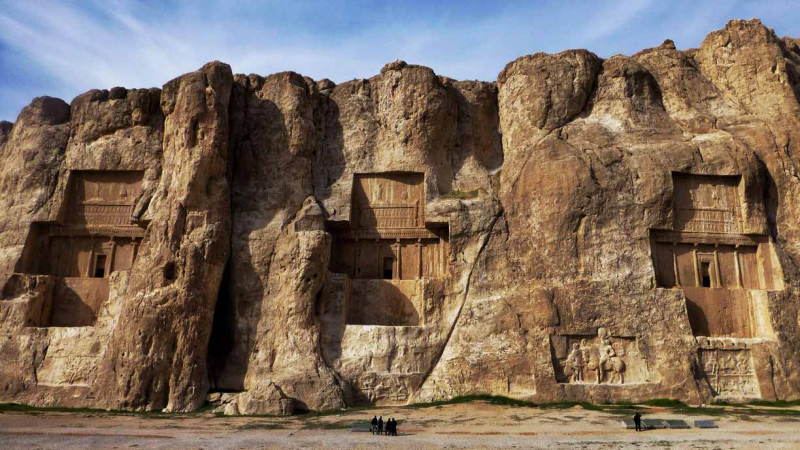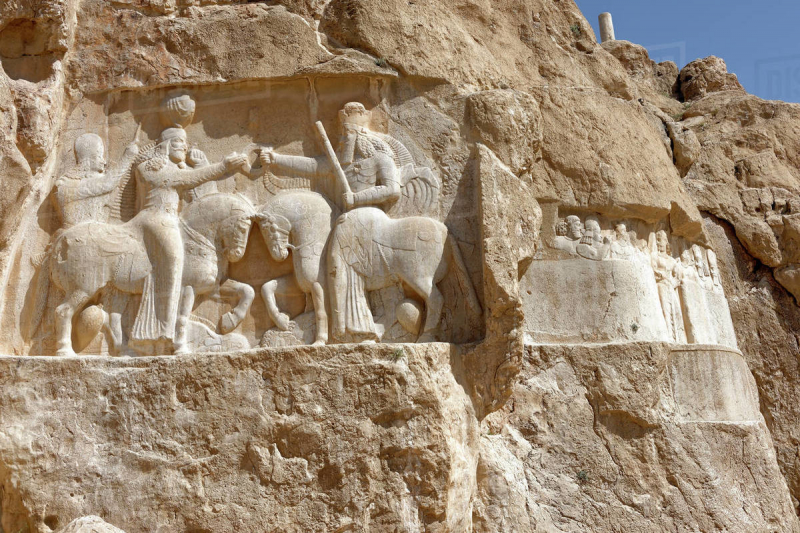Naqsh-e Rustam Necropolis
Naqsh-e Rostam is an ancient archeological site and necropolis in Fars Province, Iran, about 12 kilometers northwest of Persepolis. The mountain includes the ultimate burial site of four Achaemenid rulers, including King Darius the Great and his son, Xerxes, as well as a collection of ancient Iranian rock reliefs.
This site is significant in Iran's and Iranians' history since it has many archeological sites carved into the rock wall across millennia, from the Elamites and Achaemenids to the Sassanians. It is a few hundred meters from Naqsh-e Rajab and has four more Sassanid rock reliefs, three of which depict rulers and one of which depicts a high priest.
With four enormous tombs built high into the cliff face, Naqsh-e Rostam is the necropolis of the Achaemenid dynasty (c. 550–330 BC). The facades include large panels over the doorways, each very similar in content, with figures of the king being invested by a god, above a zone with rows of smaller figures bearing tribute, with soldiers and officials, and above a zone with rows of smaller figures bearing tribute, with soldiers and officials.
With its ancient grandeur, it's easy to see why the Naqsh-e Rustam Necropolis is one of Iran's most beautiful historical sites.
Location: Marvdasht, Fars Province












